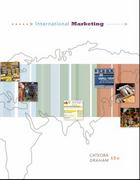Question A.
Explain the following questions.
19. A firm either in monpoly or monopolistic market observes downward sloping demand curve and thus a downward sloping marginal revenue curve because to sell more they need to lower price. Total profit of any firm depends on what quantity it produces, what price it charges and what its average total cost happens to be. A firm is not there to produce more. It is there to produce that amount which maximizes profit. So a firm produces that quantity for which marginal revenue equals marginal cost. If it produces less than that, its marginal revenue is bigger. In that case, there is profit. As long as there is profit, there is not point to limit production. So it continues increasing its production. It stops where marginal revenue equals marginal cost. If it produces beyond the quantity for which MR = MC, its marginal cost will be bigger. Then it incurs loss. It won't go that territory. For pricing decision, the message from the demand curve is the help. For any quantity, the demand curve tells the maximum price buyers are willing and able to pay. The firm will charge that price for the chosen quantity. So in graph, from the chosen quantity, you go up to the demand curve. The height tells the price you can charge. For the average total cost, the average total cost (ATC), the message from the ATC curve is of help. For any quantity, the ATC curve tells the average total cost the firm incurs. So in graph, from the chosen quantity, you go up to the ATC curve. The height tells the ATC the firm incurs. Once, Q, P and ATC are known, it is very easy to calculate total revenue, total cost and total profit. Total revenue = Price x Quantity Total cost = ATC x Quantity Total profit = total revenue - total cost Refer to the above graph that pertains to a monopoly firm and answer the following questions: a. what is the profit maximizing output of the monopoly?4. Assume that a firm's short run cost function is C(q) =100q-4q' +0.2q' +450. What is the firm's short run supply curve?? If price is p=115, how much output does the firm supply? 5. Each firm in a competitive market has a cost function of C(q) = q-q' + q . There are an unlimited number of potential firms in this market. The market demand function is given by Q=24- p . Determine the long run equilibrium price, quantity per firm, market quantity and number of firms. How do these values change is a tax of $1 per unit is collected from each firm? 6. Assume that the inverse demand function for cheese is Q=100-10p and the supply curve is Q=10p. a. [Easy] What are the effects of a specific tax of $1 per unit on the equilibrium quantity and price, government tax revenue, consumer surplus, producer surplus, welfare and DWL? b. [Harder] What are the effects of a specific subsidy (negative specific tax) of $1 per unit on the equilibrium quantity and price, government tax revenue, consumer surplus, producer surplus, welfare and DWL? c. [Hard] The government, instead of a tax or subsidy, imposes a price support (minimum price) of $6. The way this is implemented is via a deficiency payment. This means the government will guarantee producers a price of $6 and the producers choose their output accordingly. They then sell that output to consumers at whatever price consumers are willing to pay for that total output (not $6!!!). The government pays producers the difference between the $6 dollars and the price consumers are willing to pay for all units produced. This payment is called the deficiency payment. What is the quantity supplied, the price that clears the market and the deficiency payment? What effect does this program have on consumer surplus, producer surplus, welfare and deadweight loss? d. [Medium hard] Now instead of any of the policies above, the government imposes a price ceiling of $3. That is it. Price is not allowed to rise above $3. How does equilibrium change (price and quantity)? What effect does this price ceiling have on consumer surplus, producer surplus and deadweight loss








